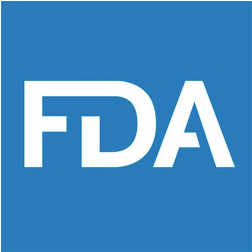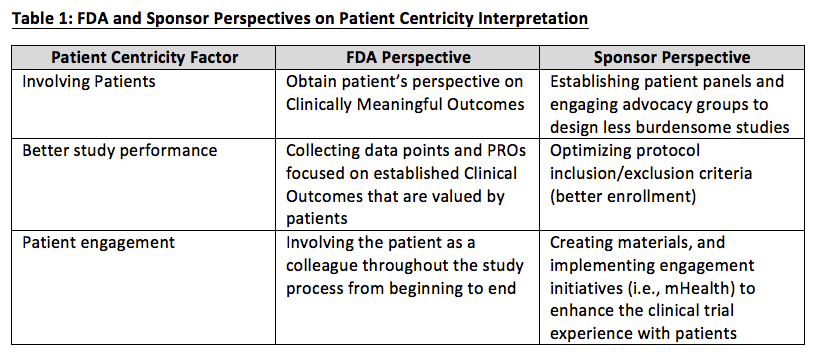FDA & Industry Share Perspectives on Patient Centricity
As patient centricity continues to evolve, the differences in perspective between sponsors and the FDA over how to define this concept run parallel. With rising awareness will come the need for a definitive model that incorporates patient centricity in drug development.
When I chaired eyeforpharma’s Patient Centered Clinical Trials conference, which was attended by both members from the FDA and industry executives, I observed that the concept of Patient Centricity continues to evolve, as the biopharmaceutical industry and regulatory agencies' perspectives on the topic seemed to gel, but, there are slight differences in interpretation. While these differences exist, the topic is starting to raise awareness about the importance of incorporating the patient in the design and execution of clinical trials. In this article, I will elaborate on my interpretation on some of the initiatives that the industry is undertaking, my take on the FDA’s perspective on patient centricity, and my analysis on how those perspectives differ.

Industry Initiatives on Patient Centricity
The impression I got from the industry is that they have taken a leap to involve patients in clinical trials. For example, some sponsors are engaging patients through panels in order to optimize study design (i.e., ways to reduce patient burden and how to make the study simpler for patients), optimize inclusion/exclusion criteria, and understand the targeted patient population in order to establish safety and efficacy parameters during data collection. Other sponsors have demonstrated case studies on evaluating medical product value through FDA’s Guidance on Benefit-Risk Assessment approach, and quantifying the patient’s perspective through pre-study patient engagement initiatives. Another sponsor showed how surveying and gathering data from patient panels before study enable them to develop materials that enhanced the patient experience, such as simplified study summaries, instructions on medical product dosing, and ‘Thank You’ certificates.
FDA Initiatives on Patient Centricity
The FDA recently launched The Patient Preference Initiative, and the Patient Engagement Advisory Committee in medical device development. These initiatives focus on incorporating the patient’s perspective during a medical product’s Total Product Lifecycle. Specifically, incorporating the patient’s preferences in defining clinically meaningful outcomes.
FDA’s Stand: What is Patient Centricity Supposed to Be About?

When a representative from the FDA spoke at the conference, they expressed a different viewpoint on patient centricity. Specifically, the representative seemed to emphasize that patient centricity is not necessarily about focusing on patient engagement initiatives, but, rather on interacting with patients to define clinically meaningful outcomes before study design. To elaborate, many medical directors (who typically tend to be physicians) oftentimes have very different mindsets on what they believe are clinically meaningful outcomes compared to patients. For example, a case study was presented where a comparative assessment on clinical outcomes was conducted between physicians and patients for anticoagulants in atrial fibrillation; patients viewed ‘disabling stroke’ as a major clinical outcome, whereas physicians perceived ‘death’ as a major clinical outcome. The representative indicated that patients need to be treated as colleagues throughout the drug development process.
Where is the Disconnect?
Table 1 delineates my interpretation of the differences in perspectives between Sponsors and the FDA on Patient Centricity.

Table 1 suggests that the biopharmaceutical industry is perceiving patient centricity as patient engagement, whereas the FDA’s perspective is focused on developing clinically meaningful outcomes, and incorporating the patient’s perspective throughout the clinical trial process.
Summary
In summary, while the concept of patient centricity is cementing, the differences in perspectives between sponsors and the FDA about the definition of patient centricity are moving in parallel, but, not in tandem. While the FDA has no guidance document on patient centricity, it is likely that sponsors and the FDA will find a model and process that consistently defines and incorporates patient centricity in drug development.
eyeforpharma’s Data and Technology in Clinical Trials 2017 takes place February 21-22 in Philadelphia.
Reaching Diverse Patient Populations With Personalized Treatment Methods
January 20th 2025Daejin Abidoye, head of solid tumors, oncology development, AbbVie, discusses a number of topics around diversity in clinical research including industry’s greatest challenges in reaching diverse patient populations, personalized treatment methods, recruitment strategies, and more.
Reaching Diverse Patient Populations With Personalized Treatment Methods
January 20th 2025Daejin Abidoye, head of solid tumors, oncology development, AbbVie, discusses a number of topics around diversity in clinical research including industry’s greatest challenges in reaching diverse patient populations, personalized treatment methods, recruitment strategies, and more.
2 Commerce Drive
Cranbury, NJ 08512
All rights reserved.